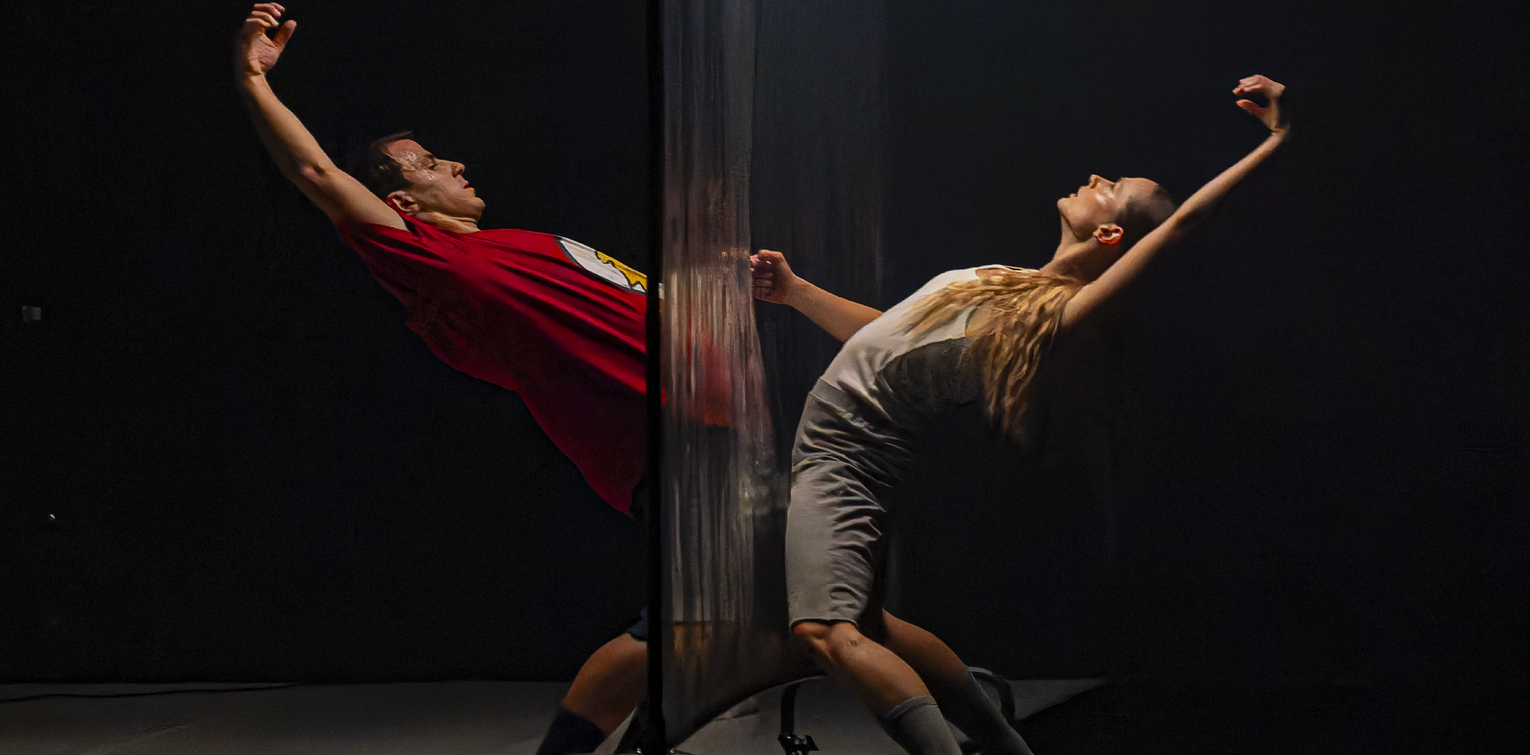Choreography and Concept: Roberto Tedesco
Original Music: Giuseppe Villarosa
Costumes: Nuvia Valestri
Performers: Alice Ruspaggiari, Nicola Stasi, Giuseppe Villarosa
Assistant: Serena Vinzio
Duration: 55 min
Production: MM Contemporary Dance Company
With the support of MiC and SIAE, within the framework of the “Per Chi Crea” program
With the support of Festival Aperto / Fondazione I Teatri - Reggio Emilia / Italian Cultural Institute of Cologne / MiC - Directorate General for Performing Arts / Parktheatre Iserlohn
A project that aims to explore the Hikikomori syndrome through a performance freely inspired by Shakespeare’s Romeo and Juliet.
LOSERS
Hikikomori, a Japanese term meaning “to stay apart,” refers to individuals who choose to withdraw from social life for extended periods. This phenomenon usually appears during adolescence and is rooted in an adaptive disorder: sufferers experience intense social anxiety and struggle to connect with their peers, eventually coming to despise their own existence — trapped in a vicious cycle.
At first, they stop going out because of social anxiety; later, they develop anxiety about the time they’ve lost, accompanied by the feeling that it’s too late to fix their broken lives. Gradually, they begin to see themselves as losers.
LOVERS
Romeo and Juliet, written between 1594 and 1596, is one of William Shakespeare’s most famous plays. It tells the story of two rival families in Verona — the Montagues and the Capulets — but above all, it recounts the love story between two young members of these families, Romeo and Juliet, whose tragic fate leads to their deaths.
This story perhaps more than any other embodies the idea of pure, absolute love, beyond all limits and prejudice.
LOS(v)ERS
Choreographer Roberto Tedesco explains:
“I asked myself: in Shakespeare’s story, the love between the two protagonists is hindered by their families — but in my version of Romeo and Juliet, what could be the obstacle?
I answered this question with a scenic image: two rooms, one white and one black, belonging to Romeo and Juliet respectively. Between them stands a wall — a kind of divider that prevents each from entering the other’s space.
The image of these small rooms — containers of life but also refuges and barriers to relationships — led my mind to the Hikikomori syndrome. What if my Romeo and Juliet were two young people who, living with this condition, withdraw from society and, locked away in their own rooms, meet and fall in love online?
What if it were their own fears keeping them apart?
To bring the story even closer to our times, I thought about how today our private lives are exposed to everyone through social media. This led me to imagine a third character, whose role is to document the lives of the two protagonists through photos and short videos, while also embodying the shadow — the unconscious, the unknown manipulator of our actions.”

